Greetings, fellow SkyWatchers! Ah, yes… the Moon is back in force and that will make for a rather quiet astronomy weekend – or will it? Why let a little reflected sunlight spoil the fun when we can take a look at just how important that studying sunlight really is, or just who drew the line at its studies?! How about taking a look for some very cool lunar craters and some very hot stars? More? Then waltz around the rings of Saturn and challenge yourself to a new star grouping. When ever you’re ready, I’ll see you in the back yard…
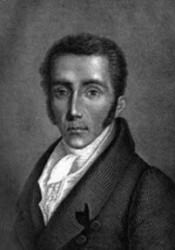 Friday, March 6, 2009 – If you see sunshine today, then celebrate the 1787 birth on this date of Joseph Fraunhofer—a trailblazer in modern astronomy. His field? Spectroscopy. Fraunhofer developed scientific instruments and specialized in the area of applied optics. While designing the achromatic objective lens for a telescope, he saw the spectrum of sunlight as it passed through a thin slit and the dark emission lines. Fraunhofer recognized that they could be used as wavelength standards, so he began measuring, labeling the most prominent with the letters still used today. His skill in optics, mathematics, and physics led Fraunhofer to design and build the very first diffraction grating.
Friday, March 6, 2009 – If you see sunshine today, then celebrate the 1787 birth on this date of Joseph Fraunhofer—a trailblazer in modern astronomy. His field? Spectroscopy. Fraunhofer developed scientific instruments and specialized in the area of applied optics. While designing the achromatic objective lens for a telescope, he saw the spectrum of sunlight as it passed through a thin slit and the dark emission lines. Fraunhofer recognized that they could be used as wavelength standards, so he began measuring, labeling the most prominent with the letters still used today. His skill in optics, mathematics, and physics led Fraunhofer to design and build the very first diffraction grating.
You’ve probably seen these little rainbows hundreds of times in your life without even realizing what they are. Would you like to create your own grating? Take a piece of ordinary clear cellophane (a bit of clean food wrapping is fine) and scratch it lightly a few times in one direction only with a piece of sandpaper. Hold it adjacent to a bright light source and tilt it until you see hundreds of hair-fine lines of color. Yes, it’s crude. . . but it works! Did Fraunhofer’s telescope designs also succeed? Of course! His achromatic objective lens is still used in modern telescopes.
Tonight the lunar crater for named for Fraunhofer is visible, but so overlighted it will be difficult to see. Honor the man of lines by looking for another ‘‘line’’ on the Moon. If conditions are right, you’ll notice a thin black line cutting across the scenery not too far
from Arzachel. Crater Thebit and bright Thebit A will guide you. The line is the shadow of an impressive lunar fault called Rupes Recta, or the ‘‘Straight Wall.’’ During lunar sunrise, we can only see the shadow on the floor of Mare Nubium, but during third quarter, the escarpment is lit in brilliant white!
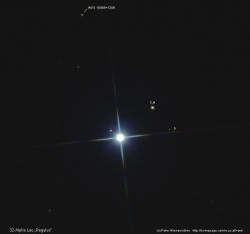 When you’re done, let’s take a look at Alpha Leonis, one of the closest bright stars to the ecliptic and known as far back as medieval times. Some cultures referred to it as the ‘‘fallen angel,’’ ‘‘the heart of the lion,’’ and the ‘‘yellow emperor.’’ We know it more commonly by its Latin name—Regulus. It’s not terribly massive, only about 3.5 times larger than our own Sun and just a few hundred million years old. But unlike Sol, 77.5-light-year-distant Regulus rotates to the extreme, revolving on its axis in less than 16 hours. Because of this rapid spin, its photosphere stretches, giving the star an oblate profile. As a victim of gravity darkening, Regulus’ poles are far hotter than its equator and 500% brighter. If it rotated any faster, centripetal force would pull it apart! But the ‘‘Little King’’ isn’t alone in space; it has two other members in its local court – a gravitationally bound 0.006-light-year-distant binary system. The brighter of the binary companions can be spotted in binoculars, but it will require a telescope to see the fainter third star another 15 billion kilometers away. The pair happily live out their lives orbiting each other about every 2 millennia, and around Regulus itself every 130,000 years.
When you’re done, let’s take a look at Alpha Leonis, one of the closest bright stars to the ecliptic and known as far back as medieval times. Some cultures referred to it as the ‘‘fallen angel,’’ ‘‘the heart of the lion,’’ and the ‘‘yellow emperor.’’ We know it more commonly by its Latin name—Regulus. It’s not terribly massive, only about 3.5 times larger than our own Sun and just a few hundred million years old. But unlike Sol, 77.5-light-year-distant Regulus rotates to the extreme, revolving on its axis in less than 16 hours. Because of this rapid spin, its photosphere stretches, giving the star an oblate profile. As a victim of gravity darkening, Regulus’ poles are far hotter than its equator and 500% brighter. If it rotated any faster, centripetal force would pull it apart! But the ‘‘Little King’’ isn’t alone in space; it has two other members in its local court – a gravitationally bound 0.006-light-year-distant binary system. The brighter of the binary companions can be spotted in binoculars, but it will require a telescope to see the fainter third star another 15 billion kilometers away. The pair happily live out their lives orbiting each other about every 2 millennia, and around Regulus itself every 130,000 years.
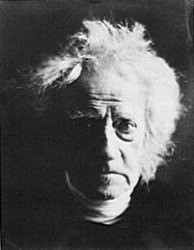 Saturday, March 7, 2009 – Today we celebrate two notable births. The year 1837 is Henry Draper’s, first to photograph the stellar spectrum; and 1792 is the year Sir William Herschel’s only child—John—was born. John Herschel began his astronomical career in 1816 when he built his first telescope. His path led him to eventual British knighthood for furthering his father’s work, and to South Africa to complete his father’s survey by cataloging the stars, nebulae, and other objects of the southern skies. In his own words;
Saturday, March 7, 2009 – Today we celebrate two notable births. The year 1837 is Henry Draper’s, first to photograph the stellar spectrum; and 1792 is the year Sir William Herschel’s only child—John—was born. John Herschel began his astronomical career in 1816 when he built his first telescope. His path led him to eventual British knighthood for furthering his father’s work, and to South Africa to complete his father’s survey by cataloging the stars, nebulae, and other objects of the southern skies. In his own words;
‘‘He that on such quest would go must know not fear or failing.’’
John returned to England in 1838, published his work, fathered 12 children, named the moons of Saturn and Uranus, and expanded the field of photography. He was a prodigious author, and you’ll even find examples of his handiwork in the Encyclopedia Britannica!
Tonight honor the great J. Herschel by identifying the lunar crater named for him in the lunar northern hemisphere. Once you have located J. Herschel, power up. Caught on this oblique crater’s edge is the deep pit of Horrebow—and a nice double strike. Compare the 156-kilometer diameter interior of J. Herschel to the smoothness of bordering Mare Frigoris. The difference in textures is astonishing! If the view holds steady, look for the larger C crater inside the walls, and a very distinct, drifted look to the crater rims. If John Herschel were alive tonight to share the eyepiece with you on his birthday, he would have said:
‘‘In circumstances where the uninformed and unenquiring eye perceives neither novelty nor beauty, the scientist and natural philosopher walks in the midst of wonder.’’
With such bright sky, it’s going to be difficult to practice much astronomy—or is it? There are always some very cool things to do if you just know where to look! Let’s head for the eighth brightest star in the sky—Procyon.
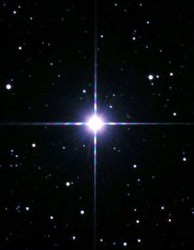 Often called ‘‘the one who proceeds the Dog,’’ Procyon also represents a dog, the beloved pet of Helen of Troy. If you haven’t noticed, Alpha Canis Minoris is also the eastern member of what is sometimes called the ‘‘Winter Triangle,’’ appearing above the horizon before the Dog Star, Alpha Canis Majoris. At 0 magnitude, it’s in fair competition with the other trio members: dazzling Sirius and mighty Betelgeuse. At a little more than 11 light-years away, it is also one of the closest stars to our Solar System.
Often called ‘‘the one who proceeds the Dog,’’ Procyon also represents a dog, the beloved pet of Helen of Troy. If you haven’t noticed, Alpha Canis Minoris is also the eastern member of what is sometimes called the ‘‘Winter Triangle,’’ appearing above the horizon before the Dog Star, Alpha Canis Majoris. At 0 magnitude, it’s in fair competition with the other trio members: dazzling Sirius and mighty Betelgeuse. At a little more than 11 light-years away, it is also one of the closest stars to our Solar System.
Now just stop and look at this beautiful star. Arabic tales describe Procyon and Sirius as two sisters, who along with their brother—Canopus—tried to cross the sky when they came to the Great Sky River. When they both entered the Milky Way and tried to swim across, only Sirius was strong enough to make it and now stands on the southern bank of that river of stars. Left alone to the north as her siblings moved on, Procyon is often referred to in mythology as ‘‘she who weeps.’’ Not surprisingly, astrology also associates Procyon with watery catastrophes!
Sunday, March 8, 2009 – On this date in 1618, Johann Kepler formulated his Third Law of Planetary Motion. Too bad he couldn’t stick around until 1804 to meet Alvan Clark, the ‘‘father’’ of the refractor who was born on this day. Clark refracting telescopes and optics graced the great observatories of the world.
Tonight we’ll turn our own telescopes toward Saturn. For a small telescope at low power, a first glimpse of Saturn is far from the grand image often portrayed of the ringed planet. Instead of beautiful, Hubble-like images, the viewer is greeted with something that looks more like a sesame seed on a black saucer than a fascinating distant world. But don’t give up! No matter what telescope size you use, the image is more dependent on seeing conditions (such as the steadiness of the atmosphere and transparency) rather than aperture.
Even at low power, watching Saturn’s moons orbit over a period of days is very rewarding. And even a very small telescope will reveal Saturn’s ring structure. As optic size increases, so do details on successive nights. Look for such wonders as the wide dark band known as the Cassini division and the dark shadow of the planet’s orb against the rings. Sharp-eyed observers often spy the ‘‘Encke gap’’—the thin, minor ring around the outside. Subtle shadings and the ring shadows on Saturn’s yellowish globe await! Try sketching while observing, even if you throw it away later. When sketching, the eye and the mind coordinate to pick up on finer details than seen by just observing alone. Be sure to take plenty of time! When the one pure moment of seeing and stability combine, even the smallest of telescopes will reward you with a view you’ll never forget.
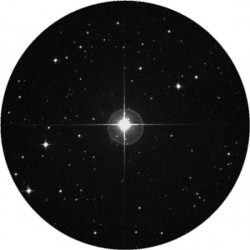 When you’re done, return to last night’s study star, Procyon, for another treat – a very pleasing little group of stars about a fist-width southeast (RA 08 25 39 Dec 02 54 23). The primary star’s name is C Hydrae, and although the group isn’t truly gravitationally bound, they’re a real delight to binoculars and telescopes of all sizes with their mixed magnitude similar spectral types!
When you’re done, return to last night’s study star, Procyon, for another treat – a very pleasing little group of stars about a fist-width southeast (RA 08 25 39 Dec 02 54 23). The primary star’s name is C Hydrae, and although the group isn’t truly gravitationally bound, they’re a real delight to binoculars and telescopes of all sizes with their mixed magnitude similar spectral types!
Until next week? Ask for the Moon, but keep on reaching for the stars!
This week’s awesome images are: Joseph Fraunhofer (historical image), Area of Rupes Recta (credit—Roger Warner), Regulus – (Credit: Peter Wienerroither, PWs fotografisches Doppelstern Projekt / PWs Photographic Doublestar Project), John Herschel (historical image), Crater J. Herschel (Credit—Wes Higgins), Procyon (credit – UC Berkeley Department of Astronomy), Saturn (credit—Wes Higgins) and C Hydrae (credit—Palomar Observatory, courtesy of Caltech). Thank you so much!

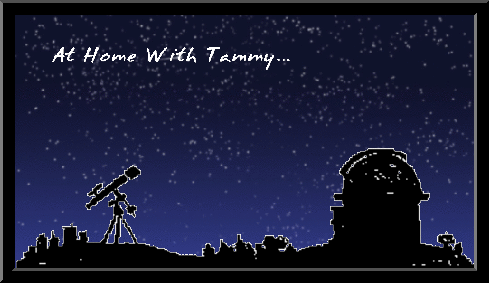
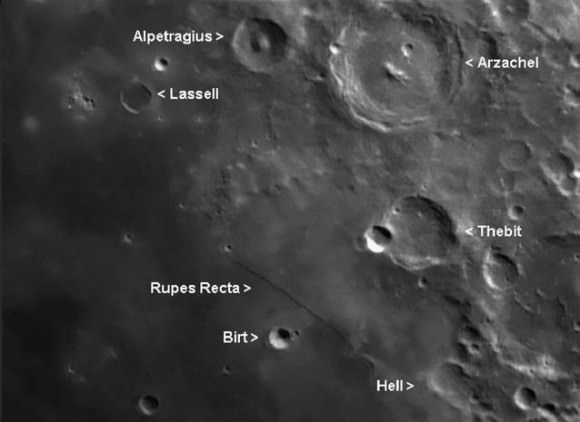
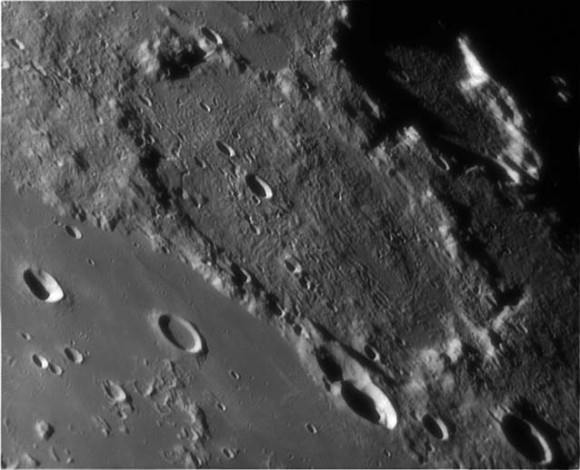
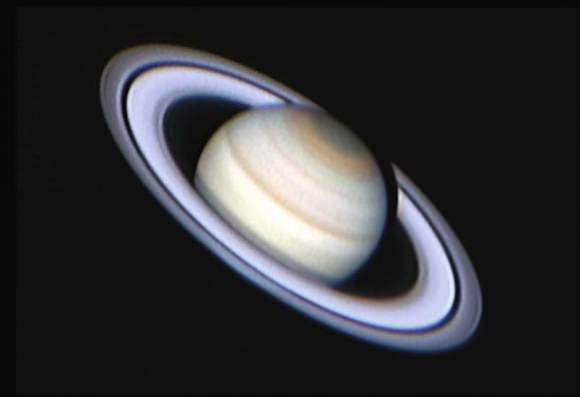
Tomorrow I’m going to an island for work, propably there won’t be the light pollution as here in the city. Be sure that I’ll look up and remember your wonderful article 🙂
I can recognise only the big and the small dipper, but it is a long time that I don’t see the dark night sky.
The islands are empty this season, I hope for it 🙂
Tammy as always you have a great write-up !
The lunar north pole is often overlooked but there is much to glean and enjoy with patience – the C-Hydrae region looks very sparse, but the treasures are there for the taking. Thanks for mentioning the obvious and the not so! You are the best at what you do – thanks!